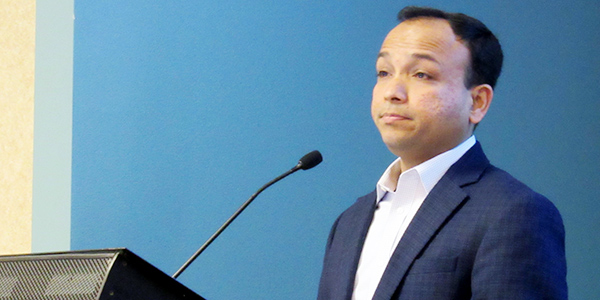By Amanda Durish Cook
Two MISO planning committees are set to begin discussions on what the RTO can do to break down walls between the annual Transmission Expansion Plan and network upgrade planning for the generation interconnection queue.
Speaking during a Coordinated Planning Process Task Team conference call Monday, MISO Senior Manager of Economic Planning Neil Shah revealed a list of transmission planning topics to be divided between the Planning Subcommittee and Planning Advisory Committee.
The task team has been compiling ways MISO could increase consistency between its MTEP and queue processes since January. Stakeholders have suggested that the RTO better align the timelines of MTEP and interconnection planning and ensure their respective studies draw on more similar data, including dispatch assumptions. The synchronization effort could have MISO approving more transmission projects by MTEP 21. (See MISO Seeks Ideas for Streamlined Tx Planning.)
Stakeholders also suggest MISO link its annual transmission planning process with network upgrade planning. Renewable proponents and some state regulators have repeatedly said the RTO is unfairly relying on interconnection customers to finance increasingly expensive new transmission capacity under the pretext of network upgrades and may be neglecting a responsibility to get major transmission projects approved in its transmission packages. Renewable advocates have questioned why interconnection studies show the need for expensive transmission upgrades when MTEP studies do not.
The PSC will review the study objectives, methodologies and modeling assumptions behind existing MISO reliability planning, economic planning, transmission service requests, and generator interconnection and retirement processes.
Once it compares the processes, the PSC may choose to make changes to certain methodologies and modeling assumptions to “ensure comparable treatment,” according to MISO.
The PAC will be tasked with the remainder of the possible planning overhaul, including devising a process for study coordination and data exchange to help MISO’s planning processes identify transmission needs “that are common to generator interconnection, reliability planning and economic planning process.”
The committee will also explore how it might design a multipurpose project designation for the Tariff that combines aspects of generation interconnection, baseline reliability and/or market efficiency projects.
Finally, the PAC will scrutinize the timing behind reliability planning, economic planning and generator interconnection processes to see how they can better align project evaluations to ensure that a recommended transmission upgrade receives the most precise project designation.
“If we coordinate and exchange information across the three planning processes, instead of us pursuing different, smaller upgrades in different processes, we have an opportunity to recommend a bigger, better project that can take care of multiple issues,” Shah said, referring to MTEP planning and necessary network upgrades identified in the generation interconnection queue.
“We could be laying the groundwork for how we restructure project categorization,” Wisconsin Public Service Commission economist Enrique Bacalao said.
Bacalao said the “natural evolution” of the PAC and PSC discussion could be that MISO reorganizes its planning processes so that “certain projects have more than one component to them” and are cost allocated accordingly.
Clean Grid Alliance’s Natalie McIntire asked why MISO’s list didn’t include the possibility of a consolidation of the generator interconnection and MTEP planning processes.
“We could potentially see that merging the processes could be helpful,” McIntire said.
That move could be on the table, Shah said, but MISO doesn’t want to prescribe any action at this point by specifically directing the PAC to consider it.
Shah said he will brief the issues list to more stakeholders at the PAC’s March 11 meeting. Multiple stakeholders thanked Shah for capturing the nuanced issues in the to-do list.




